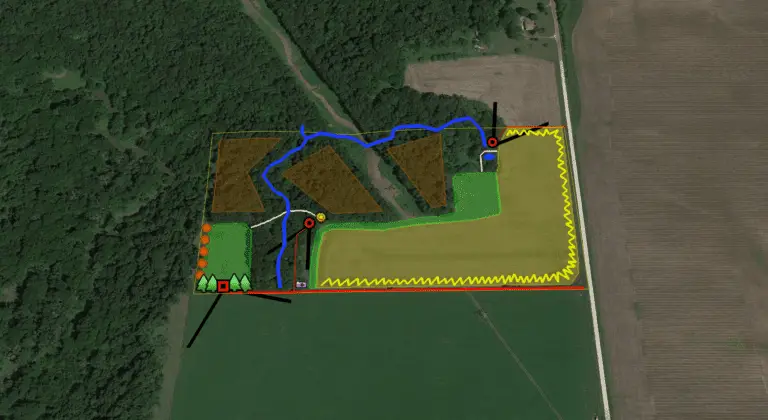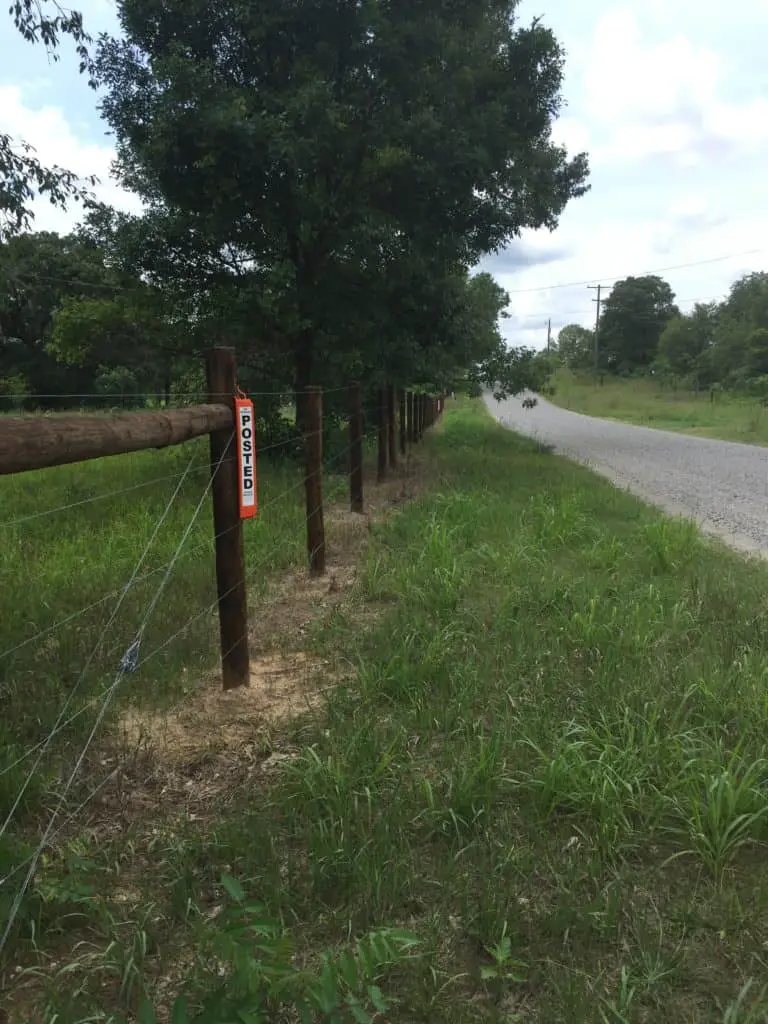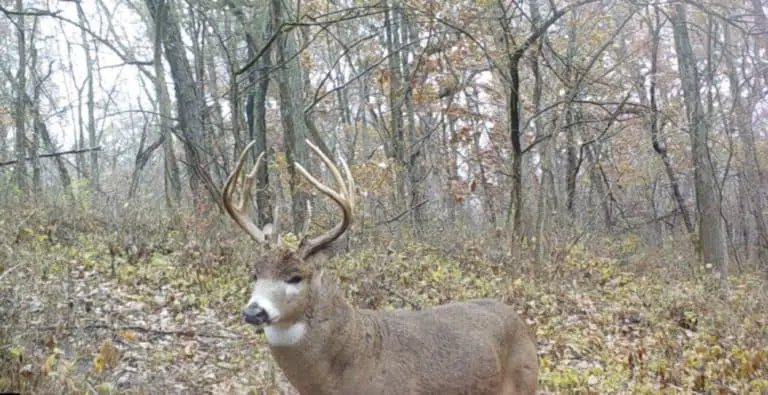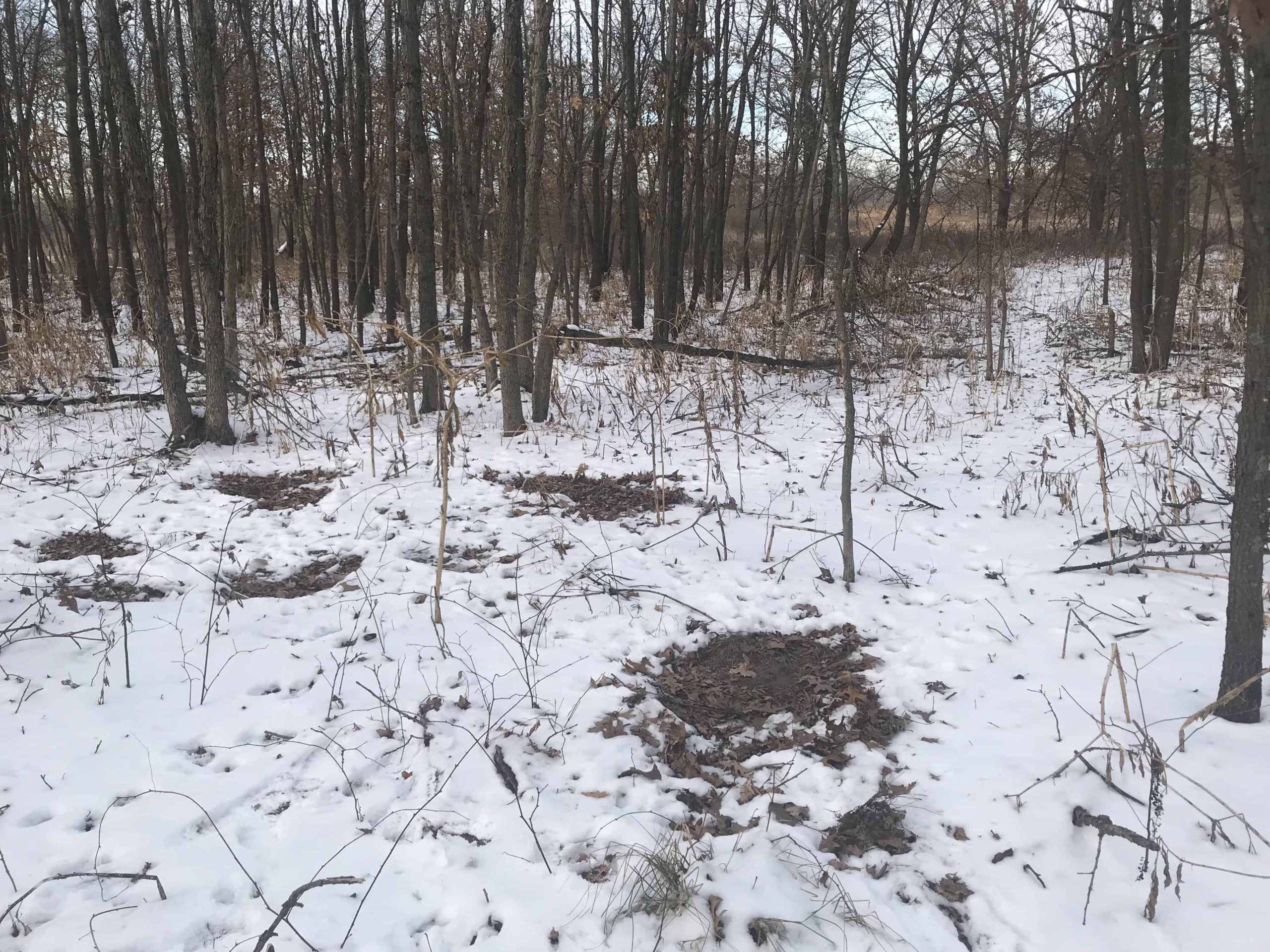I spend a lot of time looking at hunting properties and mapping out where to make improvements on them. The improvements I suggest are specific to each individual property and my clients’ goals. However, there is usually a common goal of increasing daylight activity of bucks using that property. The best way to achieve this goal is by creating a safe bedding area for deer. So, where do you put these bedding areas?
Bedding areas should be in a place where deer feel comfortable walking around during daylight hours. Every property is unique. Therefore, bedding area locations should be strategically chosen to enhance daylight deer movement on a specific property. When picking a bedding area, the first thing you should do is look at everything that surrounds the property and don’t just look at the property itself.
Deer bedrooms should be strategically located so that that it increases hunting opportunities. For example, you may not want your bedding area directly next to a destination food plot. If deer have everything they need within a small area, they might not move around enough to give you an opportunity at shooting them. If you create more distance between a food plot and a bedding area, deer could be more likely to walk in front of your stand since they have to move further distances in order to get from point A to point B.
When you are selecting a location for a bedding area, make sure you are considering all of the other improvements that are in your habitat plan. Your improvements should all be working together towards a common goal of creating more hunting opportunities for you. This is how you maximize your hunting success and the daylight buck movement on your property. If you need help with that, make sure to read this article about how to set up a property for deer hunting.
With that being said, the remainder of this article is going to answer four common questions that hunters ask when trying to figure out where to put deer bedding areas. Let’s dive into those questions now.

Should I put a bedding area on my property line?
You may or may not want to put a deer bedding area on your property line. There are a few situations when it makes sense to do that and there are also reasons why you wouldn’t want to do that.
There are several examples for why you might want to put your deer bedding area on a property line. For example, a good place might be in a far back corner of a property where you and your neighbors have a hard time accessing it. Also, if your property line meets up with an open field, like an agriculture field or a cattle pasture, that can be an excellent place for a bedding area since your neighbors can’t easily hunt the fence line. Lastly, a bedding area that’s along a road could be a great place to hold deer during the daytime. I will talk more about that further down the page in this article.
I would avoid putting bedding areas on a property line when human pressure from neighbors will likely force the deer out of those bedding areas.
In order to reduce the amount of human pressure I put on my property, I like my access to be around the perimeter of my property if the land allows for it. If you can access your property along the property line, you want to avoid putting bedding areas close to your access so that deer cannot easily see you or hear you coming and going. It’s possible to have a successful bedding area directly next to your access if you can stay hidden from deer when you pass by it. It really just depends on your specific situation and the layout of the land.
Should I put a bedding area in the middle of my property?
If you have a lot of neighboring hunting pressure on all sides of your property then you should consider putting your bedding areas in the middle of your property. The only bad thing about that is you will probably want to plant your food plots toward the center of your property also. In this example, you should try to encourage deer to move towards the center of your property and away from your neighbors. The downside to this example is a property like this can be very hard to hunt successfully. Hunting deer is going to be more difficult when human pressure is high and your bedding areas and food sources are located close to each other.
If you happen to have one or two sides of your property that doesn’t see human pressure from the neighbors, try to use that to your advantage. Consider planting your food plot or putting your bedding area towards that side of the property where there is no human pressure. You might be wondering if it’s better to have food or bedding on this side of the property. Well, it really depends on your specific setup.

Should I put a bedding area near a road?
Putting a bedding area along a road can be a great idea or a really bad idea. Not all roads are created equal. Some roads see more traffic than others which can possibly put deer on edge if there isn’t sufficient screening cover between the deer and the road. It doesn’t matter how much traffic a road gets, if there is a good screen along the road it can potentially make a great bedding area. If deer can see people driving or walking by then how are you going to access that property without deer seeing you? Therefore, if you can create a screen along the road it’s going to encourage deer to keep using that bedding area. Additionally, it will make it easier for you to stay hidden from deer when you are trying to hunt them.
If deer can clearly see a road from within a bedding area, then I don’t recommend putting a bedding area there without a screen in place.
Should I put a bedding area near my house?
You can put a bedding area near a house in some cases but not in others. There is an important question to ask when considering whether or not to put a bedding are near a house. Is the house a primary residence that is frequently visited? Deer will get comfortable with human activity within close proximity to their bedroom as long as that human activity is non-threatening and consistent. For example, deer will get comfortable with people driving up and down a driveway as long as it’s happening multiple times throughout the week. They won’t be alerted to danger when someone drives down the driveway because they have learned that this is non-threatening to their safety.
On the other hand, if you only drive down a driveway once a month or less, deer are likely going to be on high alert and will keep an eye on you to see what your next move is. If you stop the car next to a deer bedding area or get out of the car, I would expect those deer to run away. If a house isn’t frequently visited several times per week, then it might not be a good idea to put a deer bedding area next to a house.
Even though deer can become educated to feel safe when bedding near a house, they still won’t like it if you enter their bedding area. When bedding areas are close to a house there is usually a greater risk of kids, dogs, or someone else walking into their bedding area. A bedding area needs to be a sanctuary for deer to feel safe at all times during the day. Learn more about if you should enter a deer sanctuary.

Conclusion
There are several things to think about when selecting where to put deer bedding areas. It’s important to have a plan in place for all the improvements that you are going to make to a property. Make sure the location of your bedding areas will increase your hunting opportunities and not hinder them. Each and every hunting property is unique in the amount of human pressure that it gets. You need to look at everything surrounding the property before deciding where to put your deer bedding areas. Put a well written plan together for your improvements and map it out. This will help make sure you have a good strategy in place that will increase your success in the field.

